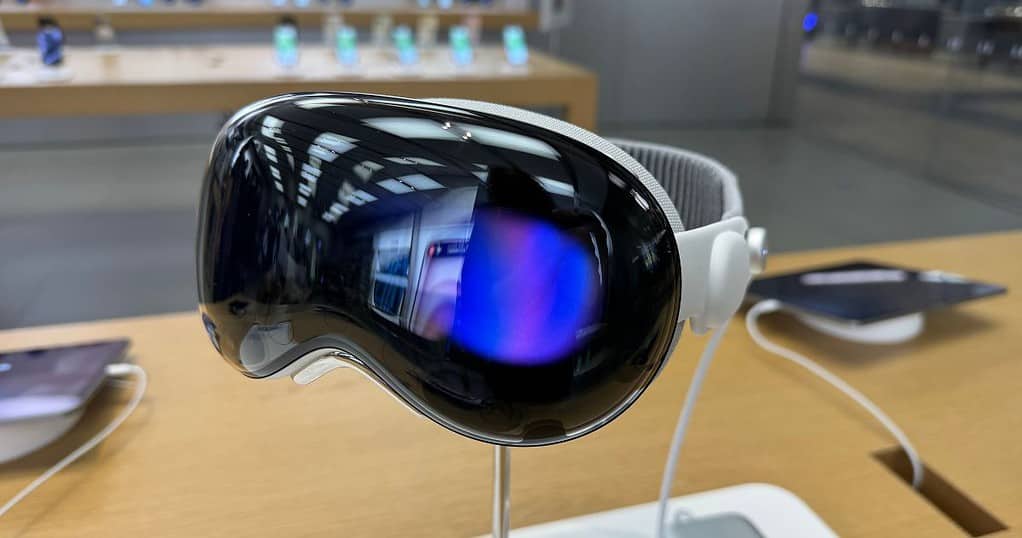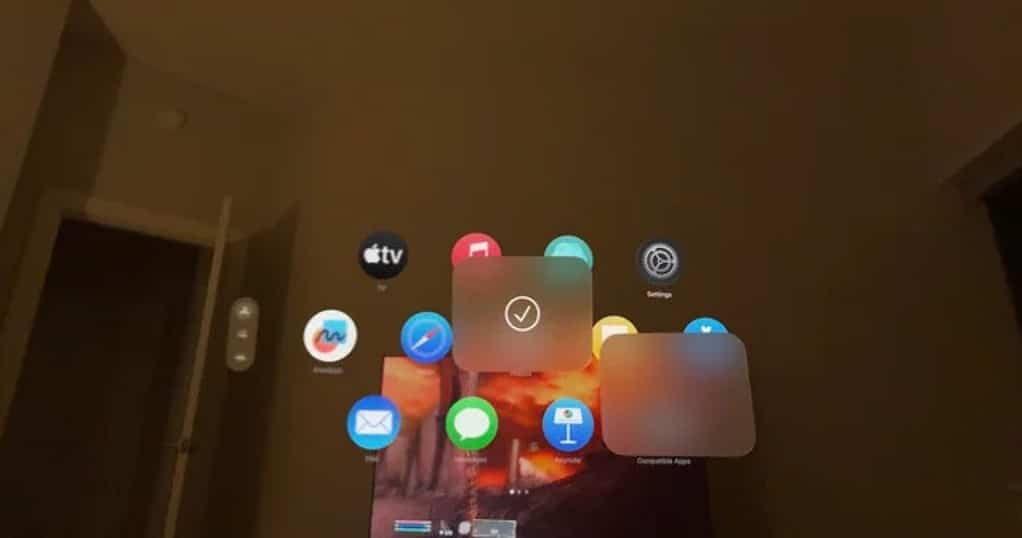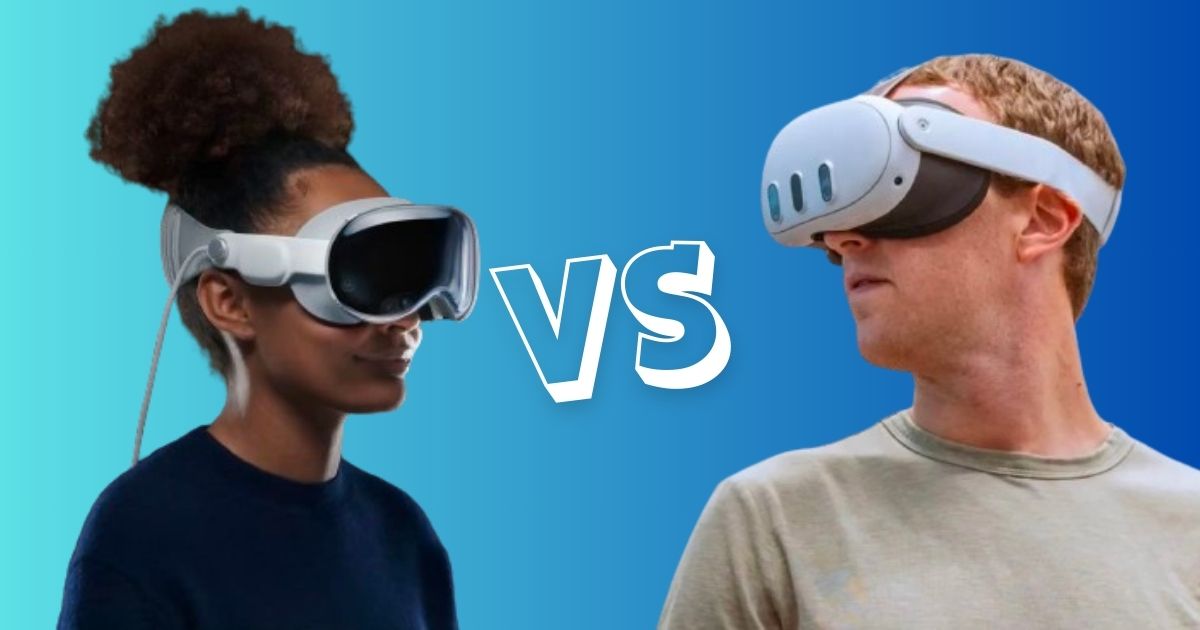Apple’s Vision Pro mixed-reality headset is still new and hit the shelves earlier this month. On the other hand, Meta’s Quest 3 has been around for a while. At first glance, the stark contrast in pricing between the Apple Vision Pro and the Meta Quest 3 may raise eyebrows. However, despite their differing target audiences, these two devices boast strikingly similar features.
Before we delve into more details, it’s important to know that Apple Vision Pro is more geared toward work, whereas the Meta Quest 3 is fully focused on gamers and VR enthusiasts.
Apple Vision Pro vs. Meta Quest 3: Specifications
| Apple Vision Pro | Meta Quest 3 | |
| Display | 3660×3142 per eye resolution, micro-OLED | 2064×2208 per eye resolution, LCD |
| Refresh Rate | 90Hz, 96Hz, 100Hz | 72Hz, 80Hz, 90Hz, 120Hz |
| Processor | Apple M2 + Apple R1 | Snapdragon XR2 Gen 2 |
| Storage Options | 256GB, 512GB, 1TB | 128GB, 512GB |
| Operating System | visionOS | Oculus Mobile platform, based on Android 12 |
| Battery Life | 2-2.5 hours | 2-2.5 hours |
| Lens | Custom catadioptric lenses and ZEISS Optical Inserts | Pancake |
| Tracking/Controllers | Hand, eye, and face tracking | Touch Plus controllers |
| Connectivity | Wi-Fi 6 (802.11ax), Bluetooth 5.3 | Wi-Fi 6E, Bluetooth 5.2 |
| Weight | 600-650 grams | 515 grams |
| Price | Starts at $3,499 | Starts at $499 |
| Availability | USA only | Australia, Austria, Belgium, Canada, Denmark, Finland, France, Germany, Iceland, Ireland, Italy, Japan, Netherlands, New Zealand, Norway, Poland, South Korea, Spain, Sweden, Switzerland, Taiwan, United Kingdom, United States. |
Apple Vision Pro vs. Meta Quest 3
Apple Vision Pro has been hogging the limelight since the announcement during WWDC 2023. And now that it has hit shelves (or heads), it’s safe to rely on the first impressions.
Apple Vision Pro and Meta Quest 3 are two mixed-reality headsets that share most features but differ in their purpose. The Vision Pro is suitable for professionals due to its superior design, multitasking, cinema experience, and camera specs. On the other hand, the Quest 3 is optimized for gamers and VR enthusiasts, offering over 1,000 apps, and supposedly a great gaming experience.
Top tech industry voices have shared their impressions about Apple Vision Pro, including OpenAI CEO Sam Altman, Tesla owner Elon Musk, Meta CEO Mark Zuckerberg, and Bloomberg’s Mark Gurman.
Sam Altman called Vision Pro “the most impressive piece of tech since the first iPhone.” Meanwhile, Elon Musk didn’t find it interesting enough. His views align with Mark Gurman, who says there’s room for improvement and current Apple Vision Pro is just the “prototype” of the final product.
A strong opinion comes from Mark Zuckerberg, whose company makes Quest headsets. He says that the Apple Vision Pro is better in terms of the cinema experience, but the Quest 3 is far superior in other aspects.
Let’s move ahead with a head-to-head comparison of Apple Vision Pro and Meta Quest 3.
1. Design
The initial impression of the Apple Vision Pro is aesthetically pleasing. The mixed-reality headset features an aluminum and glass frame chosen by Apple. Each Apple Vision Pro includes a selection of Light Seal options at purchase, as well as two customizable headbands made from soft textiles and knitted fabric for user comfort.

The Apple Vision has a sleek design, with sensors beneath a black glass-like finish. Its single strap hosts two speakers and additional controls for convenience, widening at the back to cradle the head and introducing the Fit Dial mechanism for a secure fit.
In contrast, the Meta Quest 3 has a utilitarian aesthetic. It features a simple white plastic front housing three pill-shaped modules hosting cameras and sensors, secured by a Y-style head strap. Meta also offers alternate straps and facial interfaces in Blood Orange and Elemental Blue for customization.
2. Battery
The Apple Vision Pro offers a smooth runtime of about 2 to 2.5 hours, similar to the Quest 3. However, a drawback of the Vision Pro is its reliance on a separate battery pack. Initially, this pack requires charging before being connected to the headset via a specialized connector. Popular YouTuber MKBHD also noted that Apple Vision Pro isn’t suitable for long wear.
Whereas, the Quest 3 eliminates this inconvenience. Charging only the headset itself suffices, allowing for wireless use without additional wires. Hence, the Quest 3 does a better job by housing the battery in the headset.
3. Apps & Games
Meta’s Quest headsets have been in the market for over three generations, so it wouldn’t be fair to say the Apple Vision Pro lacks apps and games. Over the years since the Quest’s launch, developers have introduced numerous apps.
In the two weeks since its release, Apple boasts over 1,000 apps on the VisionOS App Store, and it supports over 1.5 million apps available for iPad. Meanwhile, the Quest 3 is compatible with the Quest 2 catalog of over 500 VR games, apps, and experiences, and the Meta Quest Store offers over 1,000 apps.

The major difference is that the Apple Vision Pro’s multitasking is better than the Meta Quest 3. Furthermore, one can open more windows on the Apple Vision Pro than on the Meta Quest 3.
Additionally, the cinema experience is superior on the Vision Pro. It also offers some cool features. For example, if you’re watching “The Lion King” and you set the environment to a jungle-like view, the experience is much better.
4. Camera
The Vision Pro is equipped with 12 cameras, including a LIDAR sensor, TrueDepth camera, and IR flood illuminators for improved hand visibility in low-light conditions. In comparison, the Quest 3 features 4 front-facing cameras for mixed reality passthrough and SLAM tracking, along with peripheral IR cameras on the lower sides of the headset. Additionally, the Quest 3 includes a depth projector to enhance depth perception in mixed reality experiences but lacks eye tracking.
Another major difference is that the Vision Pro allows video calling beyond native apps, unlike the Quest 3. Of course, the Vision Pro makes use of digital persona but it works on third-party apps like Discord as well.
Reviews, praise the Vision Pro’s eye and hand tracking as while noting that the Quest 3’s hand tracking can be buggy and unreliable. On the other hand, the Quest 3’s dedicated controllers enhance its gaming experience, giving it an edge over the Vision Pro.
5. Price
The Apple Vision Pro is currently available for sale only in the US. It starts at $3,599 for the base variant with 256GB storage. And, the 512GB and 1TB variants come at $3,699 and $3,899 respectively. Additionally, if you wear prescription glasses, you might need to purchase ZEISS Optical Inserts at an extra cost.
The Meta Quest 3 is available in several countries and regions. It comes at $499 for the 128GB variant and $649 for the 512GB variant.
Which One Should You Get, the Meta Quest 3 or the Apple Vision Pro?
Well, that totally depends on your preferences, especially when factors like device availability in the region are involved. Plus, there’s a huge price difference. Apple Vision Pro is priced nearly seven times more than the Meta Quest 3.
If price isn’t an issue, the Apple Vision Pro is a better pick, and it’s expected to be even better with the coming updates. It’s new, and there’s a lot of room for improvement. Its sleek design and integration with Apple’s ecosystem, including visionOS and compatibility with over native 1,000 apps and 1.5 million iPad apps, cater to users seeking a premium mixed-reality experience for work and productivity tasks.
But, if gaming is one of the things you want with your VR headset, the Meta Quest 3 should be an easy pick. The Quest 3 offers a compelling choice for those seeking entertainment and gaming-focused features. Its Snapdragon XR2 Gen 2 processor and dedicated Touch Plus controllers contribute to a seamless gaming experience, making it an easy pick for gaming enthusiasts.
